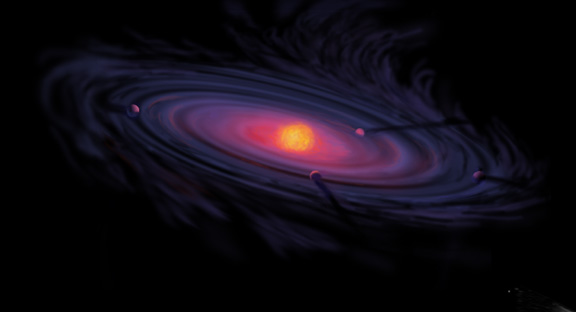

Talk for Dagstuhl Seminar
Mechanisms Of Ongoing Development in Cognitive Robotics
10-15 Feb 2013
Slides for presentation added after workshop here (PDF):
http://www.cs.bham.ac.uk/research/projects/cogaff/talks/#talk107b

How could a planet, condensed from a cloud of dust, have produced minds -- and
products of minds, along with microbes, mice, monkeys, mathematics, music, marmite,
murder, megalomania, and all other forms and products of life on earth (and possibly
elsewhere).I'll introduce the ambitious, multi-disciplinary Meta-Morphogenesis project, partly
inspired by Turing's 1952 paper on morphogenesis. It may lead to an answer, by
identifying the many transitions between different types and mechanisms of biological
information processing, including transitions that changed the mechanisms of change,
altering forms of evolution, development, learning, culture and ecosystem dynamics.
One of the questions raised is whether chemical information-processing exceeds the
powers of Turing machines and modern computers.DRAFT -- TO BE EXPANDED
For more information about the Meta-Morphogenesis project see:
- http://www.cs.bham.ac.uk/research/projects/cogaff/misc/meta-morphogenesis.html
Messy overview- http://tinyurl.com/CogMisc/toddler-theorems.html
The development of offline intelligence in young children, and possibly other animals.- http://tinyurl.com/CogMisc/beyond-modularity.html
Relevance of the work of Annette Karmiloff-Smith- http://www.cs.bham.ac.uk/research/projects/cogaff/misc/evolution-info-transitions.html
Towards a theory and comprehensive collection, of types of transition in biological
information processing, in evolution, development, learning, stigmergy, social behaviours,
cultures, ecosystems, ...
A partial index of discussion notes is in http://www.cs.bham.ac.uk/research/projects/cogaff/misc/AREADME.html
Maintained by
Aaron Sloman
School of Computer Science
The University of Birmingham